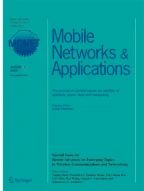Abstract
Federal Regulation has suggested that all passengers in the airplane should finish the evacuation within 90 s. This research applied a Discrete Event Simulation (DES) model to investigate passengers’ evacuation paths and decision-making processes for aircraft evacuation under emergency. ARENA® 14 was used on an Airbus A380 cabin configuration with capacity of 538 as the baseline model. Total evacuation time and the congestion conditions of each gate were used as a measure for the evacuation process. The baseline model was validated using a real world A380 certification evacuation drill. An experiment was conducted based on the modification of the baseline model to investigate the effect of different path planning strategies on total evacuation time. Results suggested that a flight attendant directed approach yielded significantly more efficiency than passenger random exit choosing and switching exits. Practical implications and future study were given at the end of the paper to consider a more realistic and dynamics simulation approach to address this problem.
Similar content being viewed by others
References
Aviation Institute of George Washington University. (2008). Evacuation and mitigation of aircraft slide evacuation injuries. Ashburn
Federal Aviation Administration. (n.d.). Federal Aviation Regulation Part 121.291. Retrieved from Federal Aviation Regulation: http://www.ecfr.gov/cgi-bin/retrieveECFR?gp=&SID=257c1bb863261dd217bf30e8aa04df32&mc=true&n=pt14.3.121&r=PART&ty=HTML#se14.3.121_1291.
Frank G, C.O., D. (2011) Room evacuation in the presence of and obstacle. Physica:2135–2145
Galea ER, Blake SJ, Lawrence PJ (2004) Report on the testing and systematic evaluation of the airEXODUS aircraft evacuation model. Documedia Solutions Ltd., Cheltenham
Galea ER, Finney KM, Dixon AP, Siddiqui A, Cooney DP (2006) Aircraft accident statistical and knowledge database: analyzing passenger behavior in aviation accidents. J Aircr
Kelton DW, Sawdowski RR, Swets NB (2010) What is simulation? In: Kelton DW, Sawdowski RR, Swets NB (eds) Simulation with Arena, 5th edn. McGraw-Hill Companies, Inc., New York, p 10
Koh, W. L., Zhou, S. (2011). Modeling and Simulation of Pedestrian Behaviors in Crowded Places. ACM Transactions on Modeling and Computation Simulation, 20
McLean GA (2001) Access-to-egress: a meta-analysis of the factors that control emergency evacuation through the transport airplane type-III Overwing exit. Civil aeromedical institute, Office of Aviation Medicine. National Technical Information Service, Springfield
Miyoshi T, Nakayasu H, Ueno Y, Patterson P (2012) An emergency aircraft evacuation simulation considering passenger emotions. Computer & Industrial Engineering:746–754
Motevalli V, Monajemi L, Rassi M (2008) Study on emergency evacuation challenges on large transport aircraft. Airport Cooperative Research Program:66–67
Muir, H., Marrison, C., Evans, A. (1990). Aircraft evacuation preliminary investigations of the effect of non-toxic smoke and cabin configuration adjacent to the exit. U.K.
Muir HC, Thomas LJ, Wilson RL (2004) Passenger safety in future very large transport aircraft. Human Factors and Aerospace Safety:259–271
Rosenkrans, W. (2007). Over in a flash. Aerosafety World
Sharma S, Singh H, Prakash A (2007) Multi-agent modeling and simulation of human behavior in aircraft evacuation. IEEE:1477–1488
Shi L, Xie Q, Cheng X, Chen L, Zhou Y, Zhang R (2009) Developing a database for emergency evacuation model. Build Environ 44(8):1724–1729
Snow CC, Carroll JJ, Allgood MA (1970) Survival in emergency escape from passenger aircraft. Office of Aviation Medicine, Washington D.C.
Thomas LJ, O'Ferrall S, Caird-Daley A (2006) Evacuation commands for optimal passenger management. Australian Transport Safety Bureau, Canberra City
Thompson, P., Lindstrom, H., Ohlsson, P., & Thompson, S. (2003). Simulex: analysis and changes for IMO Compliance. Proceedings of 2nd International Conference: Pedestrian and Evacuation Dynamics, (pp. 173-184)
Togher, M., Galea, E. R., & Lawrence, P. J. (2009). An Investigation of Passenger Exit Selection Decisions in Aircraft Evacuations Situations. Human Behavior in Fire Symposium, 421-432
Xue Z, Bloebaum C (2008) A particle swarm optimization-based aircraft evacuation simulation model-vacate air. American Institute of Aeronautics and Astronautics, Buffalo
Yeo SK, He Y (2008) Commuter characteristics in mass rapid transit in Singapore. Fire Saf J
Author information
Authors and Affiliations
Corresponding author
Additional information
Publisher’s note
Springer Nature remains neutral with regard to jurisdictional claims in published maps and institutional affiliations.
Rights and permissions
About this article
Cite this article
Liu, D., Deng, X. Investigating the Strategy on Path Planning on Aircraft Evacuation Process Using Discrete Event Simulation. Mobile Netw Appl 26, 736–744 (2021). https://doi.org/10.1007/s11036-019-01416-2
Published:
Issue Date:
DOI: https://doi.org/10.1007/s11036-019-01416-2
